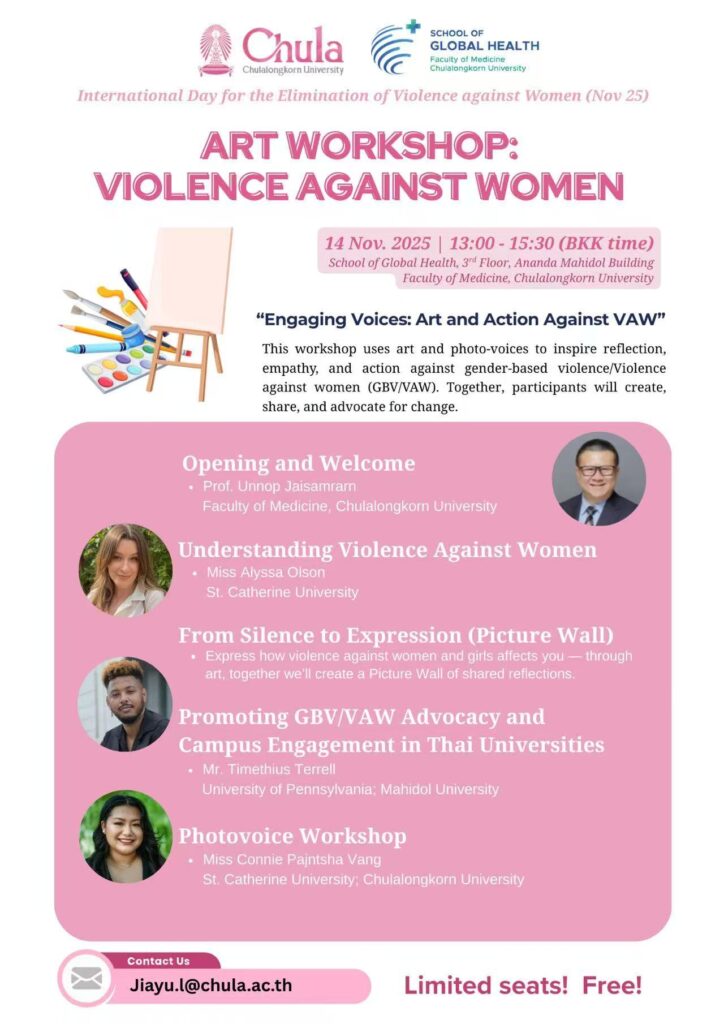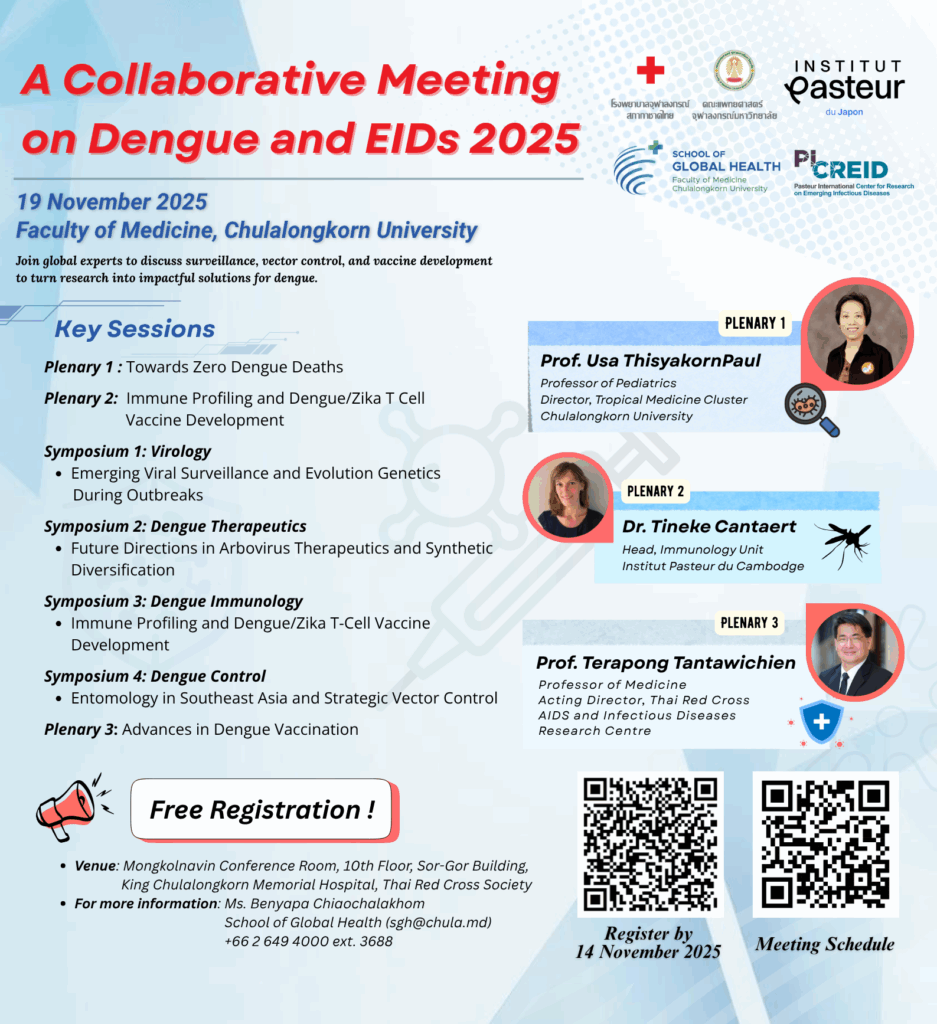Emergent Meeting to Respond to the Great Earthquake in Myanmar with Prof. Hiroyuki Nomoto (nomoto@tmu.ac.jp)

In response to the recent earthquake that shook parts of Myanmar and was felt in Bangkok, the School of Global Health, Faculty of Medicine, Chulalongkorn University swiftly organized an emergency online lecture titled “Earthquake Awareness and Disaster Preparedness” on March 29, 2025. The session aimed to equip students, faculty members, and international residents with practical knowledge and guidance on how to stay safe during seismic events.
Delivered by Prof. Hiroyuki Nomoto from Tokyo Metropolitan University, the lecture covered essential information on earthquake science, personal and community preparedness, and lessons from Japan’s disaster response experience. The main points are summarized as follows:
1. General Information to Respond to the Earthquake
Prof. Nomoto began by explaining that the recent earthquake originated from a major fault line running through Myanmar. Fault slippage is the primary cause of such seismic activity, and surface-level ruptures can result in more severe damage. He emphasized the importance of staying alert for aftershocks, which may occur repeatedly and could even exceed the initial tremor in intensity. Residents are advised to check the structural safety of their homes or buildings after the shaking stops. Special attention should also be given to long-period ground motions, which can cause intense swaying of tall buildings—even at locations far from the epicenter—potentially leading to structural failure. To prepare for future earthquakes, individuals are encouraged to stock at least two weeks’ worth of food and water, keep essential medications on hand, secure heavy furniture to walls or floors, and place shoes beside their beds for quick evacuation if tremors strike during the night.
2. Attitudes and Mindsets for Disaster Risk Reduction
Prof. Nomoto emphasized that in times of disaster, the most important mindset is to prioritize personal survival. As he noted, “Please do your best to save your own life — if each person saves themselves, everyone can survive.” He reminded participants that “almost all documents can be re-issued — but your life cannot,” underscoring the irreplaceable value of life. A key psychological barrier to timely evacuation is normalcy bias — the tendency to believe that everything will remain as it is. This can lead to dangerous assumptions such as “the building I live in is strong enough” or “a bigger earthquake probably won’t happen.” Recognizing and overcoming such attitudes is critical to effective disaster response and survival.
3. Community and Healthcare-Related Issues
Prof. Nomoto highlighted that in the aftermath of an earthquake, evacuation shelters will be opened or constructed to accommodate displaced individuals. In these settings, healthcare services are just as essential as food and medical supplies. Special attention must be given to hygiene management, the prevention of infectious diseases, and the risk of “economy syndrome” — a condition like deep vein thrombosis (DVT) caused by sitting in confined spaces for long periods without movement. Additionally, universities have a critical role to play. Prof. Nomoto recommended that institutions form disaster preparedness teams composed of faculty members and students to enhance response capacity and foster community resilience.
4. Selected Key Q&A Highlights
What should we do if we live on higher floors (e.g., 20+)? For residents of tall buildings, Prof. Nomoto advised not to use elevators during a quake, to shelter in place under sturdy furniture if evacuation isn’t immediately possible, and to secure heavy items while preparing emergency kits in advance.
Are mobile networks reliable during earthquakes? How can we contact our families? In Japan, mobile networks often become overloaded during disasters. Prof. Nomoto recommended using SMS instead of calls, setting up pre-agreed family contact plans, and downloading disaster alert apps for reliable communication.
How can we educate students about earthquake preparedness? Prof. Nomoto shared that Japan embeds earthquake education in the formal school curriculum, emphasizes early preparedness, and regularly conducts nationwide drills — helping students develop safety habits from a young age.
Closing Messages
In his concluding remarks, Prof. Nomoto emphasized two key messages: first, that training saves lives — as seen during the East Japan Earthquake, where well-prepared communities experienced significantly fewer casualties; and second, that hope must be preserved, even in crisis. As he poignantly stated, “Everything other than life can be reconstructed.”
More details could be found from the attachment.



